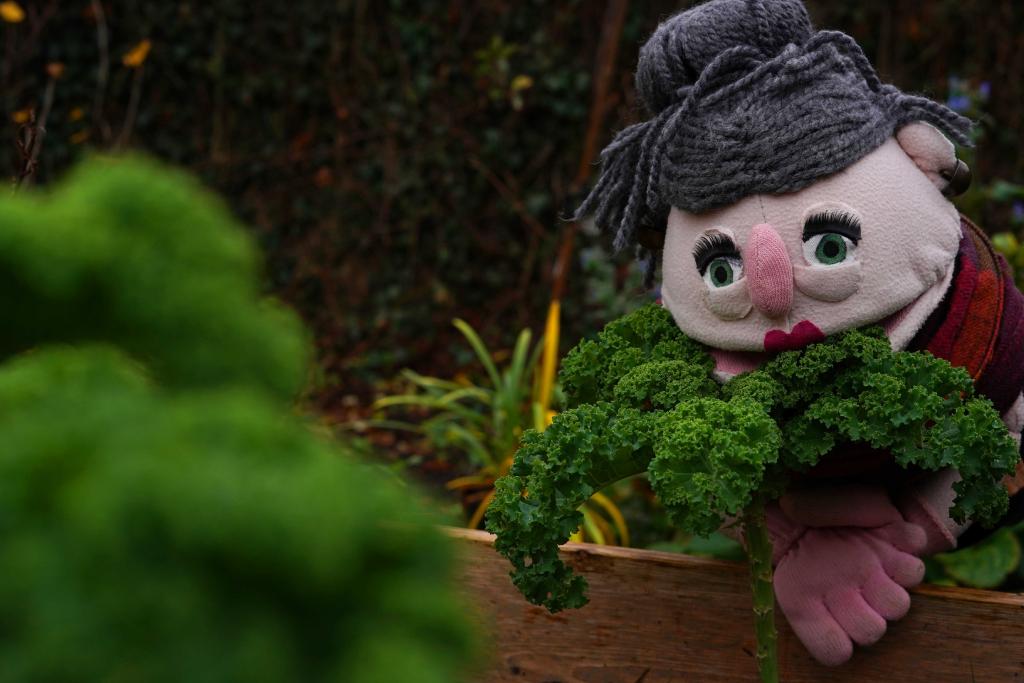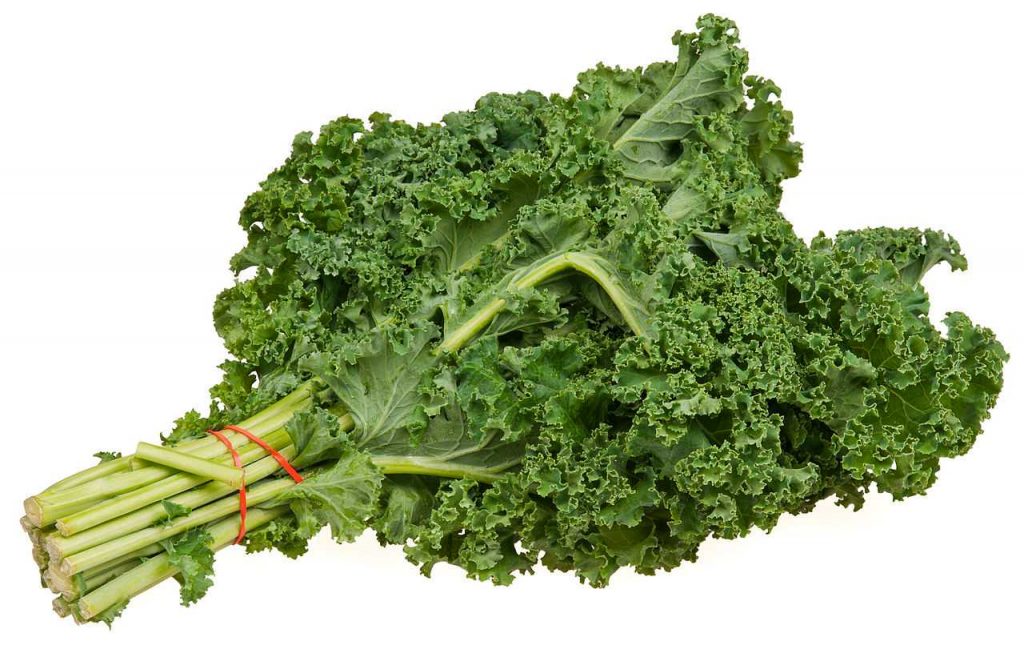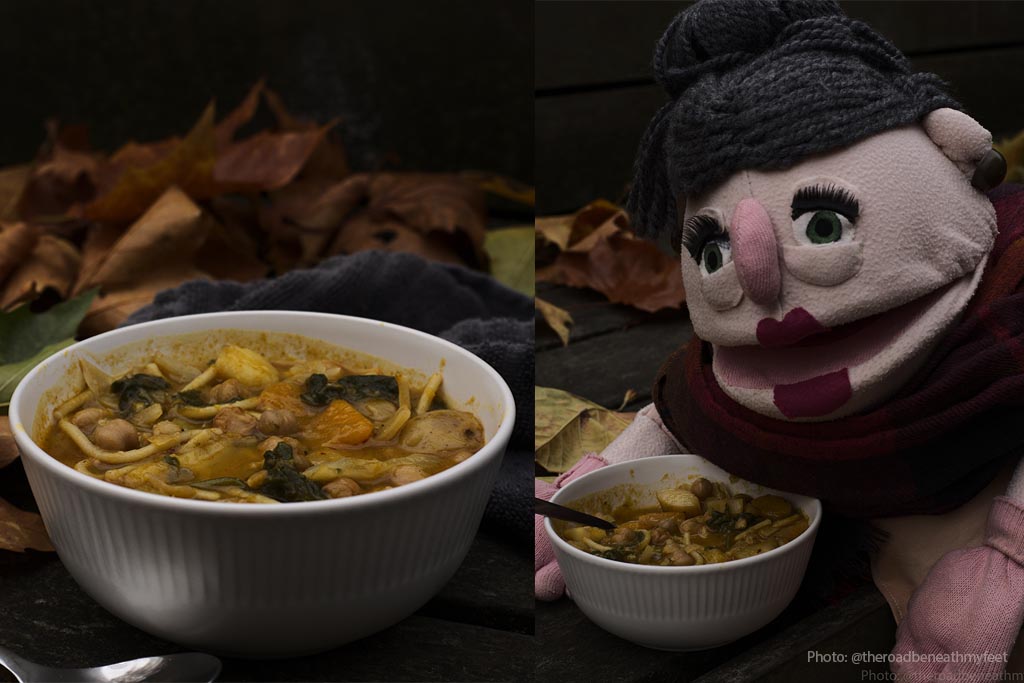KALE // SEASONAL FOOD

❄️🌱🤔 Did you know that a single cup of raw kale actually contains more vitamin C than an orange? Luckily for you, kale is a winter vegetable. That’s why Grandma Sita is picking and eating a lot of kale from her garden.
💪 Kale or leaf cabbage is very high in nutrients and very low in calories, making it one of the most nutrient-dense foods on the planet.
🥦 Like broccoli, kale is part of the Brassica oleracea family, which also includes cabbage, cauliflower, bok choy, collard greens, and Brussels sprouts.
👩🍳 Kale is dark, leafy green you can eat it raw or cooked. When it comes to healthy eating, kale should definitely be included in your diet.
🚜 Planted in the late fall, it provides handfuls of greens all winter long. And what else can this seasonal green offer?

Kale, or leaf cabbage, belongs to a group of cabbage (Brassica oleracea) cultivars grown for their edible leaves, although some are used as ornamentals. Kale plants have green or purple leaves, and the central leaves do not form a head (as with headed cabbage). / Source: Wikipedia
- NUTRITION
Kale or leaf cabbage is very high in nutrients and very low in calories, making it one of the most nutrient-dense foods on the planet. Kale is very rich in iron and extremely high in vitamin C, an antioxidant that has many important roles in the body. A single cup of raw kale actually contains more vitamin C than an orange. When it comes to healthy eating, kale should definitely be included in your diet. / Source: Healthline.com
Nutrition information for major nutrients of 100g of kale
|
Calories |
28 |
|
Carbohydrates |
5.6 g |
|
Fiber |
2 g |
|
Sugars |
1.3g |
|
Fat |
0.4 g |
|
Protein |
1.9 g |
|
Vitamin A |
272% |
|
Vitamin C |
68% |
|
Iron |
5% |
|
Calcium |
5,5% |
- CULTIVATION
Kale originated in the eastern Mediterranean and Asia Minor, where it was cultivated for food beginning by 2000 BCE at the latest. Curly-leaved varieties of cabbage already existed along with flat-leaved varieties in Greece in the 4th century BC. These forms, which were referred to by the Romans as Sabellian kale, are considered to be the ancestors of modern kales.
Kale is usually an annual plant grown from seed with a wide range of germination temperatures. Kale plants are extremely robust, adaptable to many different situations, and will grow in winter. Growing kale can be done in all types of soil, although they prefer sunny, well-drained areas. / Source: gardeningknowhow.com
- FUN FACT
Kale is hardy and thrives in wintertime, and can survive in temperatures as low as –15.0° Celsius. Kale can become sweeter in taste after a heavy frost. / Source: Wikipedia
- USES
Many varieties of kale and cabbage are grown mainly for ornamental leaves that are brilliant white, red, pink, lavender, blue, or violet in the interior of the rosette. Ornamental kale is as edible as any other variety, but potentially not as palatable. Kale leaves are increasingly used as an ingredient for vegetable bouquets and wedding bouquets. / Source: gardeningknowhow.com
- PLANT-BASED RECIPES
👉🏼 Warming stew with kale by Grandma Sita

- EXPLORE SEASONAL FRUIT AND VEGETABLES IN EUROPE
🍐🍅🇪🇺 The European Food Information Council (EUFIC) has created a tool map to help people explore seasonal fruit & vegetables in Europe. Check out what’s in season where you are. 👉https://www.eufic.org/en/explore-seasonal-fruit-and-vegetables-in-europe/
🌎 Eating local and seasonal fruit & vegetables helps to reduce food waste, saves resources, improves food quality and healthy habits, and boosts the local economy.
